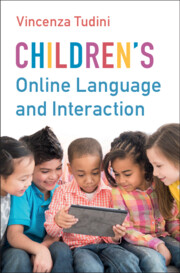Refine search
Actions for selected content:
29 results
Chapter 17 - Benefits and Risks of the Digital World
-
-
- Book:
- Seminars in Child and Adolescent Psychiatry
- Published online:
- 10 October 2025
- Print publication:
- 30 October 2025, pp 264-277
-
- Chapter
- Export citation
Gaming’s hidden gamble: are we betting more than we realise?
-
- Journal:
- Irish Journal of Psychological Medicine , First View
- Published online by Cambridge University Press:
- 27 October 2025, pp. 1-3
-
- Article
-
- You have access
- HTML
- Export citation
Longitudinal associations between gaming and academic motivation during middle childhood
-
- Journal:
- Psychological Medicine / Volume 55 / 2025
- Published online by Cambridge University Press:
- 25 August 2025, e235
-
- Article
-
- You have access
- Open access
- HTML
- Export citation
12 - Excessive Federal Bureaucracy
- from Part II - Self-Determination Meets Paternalism
-
- Book:
- Becoming Nations Again
- Published online:
- 17 April 2025
- Print publication:
- 24 April 2025, pp 174-189
-
- Chapter
-
- You have access
- Open access
- HTML
- Export citation
9 - Behavioural Addictions
-
- Book:
- How to Talk to Your Child About Drugs
- Published online:
- 13 February 2025
- Print publication:
- 06 March 2025, pp 182-195
-
- Chapter
- Export citation
8 - Summary of Findings, Implications, and Guidelines
-
- Book:
- Children's Online Language and Interaction
- Published online:
- 19 December 2024
- Print publication:
- 02 January 2025, pp 177-192
-
- Chapter
- Export citation
4 - Video Game Talk
-
- Book:
- Children's Online Language and Interaction
- Published online:
- 19 December 2024
- Print publication:
- 02 January 2025, pp 78-97
-
- Chapter
- Export citation
5 - Minecraft Interaction
-
- Book:
- Children's Online Language and Interaction
- Published online:
- 19 December 2024
- Print publication:
- 02 January 2025, pp 98-131
-
- Chapter
- Export citation

Children's Online Language and Interaction
-
- Published online:
- 19 December 2024
- Print publication:
- 02 January 2025
Video gaming and its impact on driving simulation performance: A secondary analysis of a randomized control trial
-
- Journal:
- Journal of Clinical and Translational Science / Volume 8 / 2024
- Published online by Cambridge University Press:
- 11 December 2024, e213
-
- Article
-
- You have access
- Open access
- HTML
- Export citation
9 - Regulatory Compliance, Public Enforcement and Private Certification
- from Part II - Design, Dynamics and Implementation
-
- Book:
- An Introduction to Law and Regulation
- Published online:
- 22 November 2024
- Print publication:
- 28 November 2024, pp 275-300
-
- Chapter
- Export citation
30 - Video Game Effects
- from Part IV - Effects in Cyber Behavior
-
-
- Book:
- The Cambridge Handbook of Cyber Behavior
- Published online:
- 06 December 2024
- Print publication:
- 09 November 2023, pp 879-913
-
- Chapter
- Export citation
5 - Players and the Stakes
-
- Book:
- The Evaluation Game
- Published online:
- 21 April 2023
- Print publication:
- 27 April 2023, pp 137-156
-
- Chapter
- Export citation
The relationship between sleep problems and gaming addiction in adults
-
- Journal:
- European Psychiatry / Volume 65 / Issue S1 / June 2022
- Published online by Cambridge University Press:
- 01 September 2022, pp. S816-S817
-
- Article
-
- You have access
- Open access
- Export citation
Factors related to Gaming addiction in adults
-
- Journal:
- European Psychiatry / Volume 65 / Issue S1 / June 2022
- Published online by Cambridge University Press:
- 01 September 2022, pp. S367-S368
-
- Article
-
- You have access
- Open access
- Export citation
The impact of gaming addiction on Health-Related Quality of Life in adults
-
- Journal:
- European Psychiatry / Volume 65 / Issue S1 / June 2022
- Published online by Cambridge University Press:
- 01 September 2022, pp. S822-S823
-
- Article
-
- You have access
- Open access
- Export citation
6 - Learning vocabulary out of class
-
- Book:
- Learning Vocabulary in Another Language
- Published online:
- 02 June 2022
- Print publication:
- 09 June 2022, pp 242-274
-
- Chapter
- Export citation
10 - Technology-Mediated Task-Based Language Teaching
- from Part IV - Methodology and Pedagogy
-
-
- Book:
- The Cambridge Handbook of Task-Based Language Teaching
- Published online:
- 19 November 2021
- Print publication:
- 09 December 2021, pp 326-345
-
- Chapter
- Export citation
5 - Digital Fiction
- from Part I - Forms
-
-
- Book:
- The Cambridge Companion to Twenty-First Century American Fiction
- Published online:
- 02 September 2021
- Print publication:
- 23 September 2021, pp 100-120
-
- Chapter
- Export citation
Gaming addiction among Tunisian adolescent
-
- Journal:
- European Psychiatry / Volume 64 / Issue S1 / April 2021
- Published online by Cambridge University Press:
- 13 August 2021, p. S824
-
- Article
-
- You have access
- Open access
- Export citation
